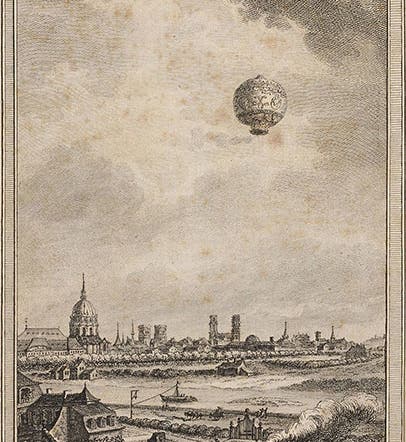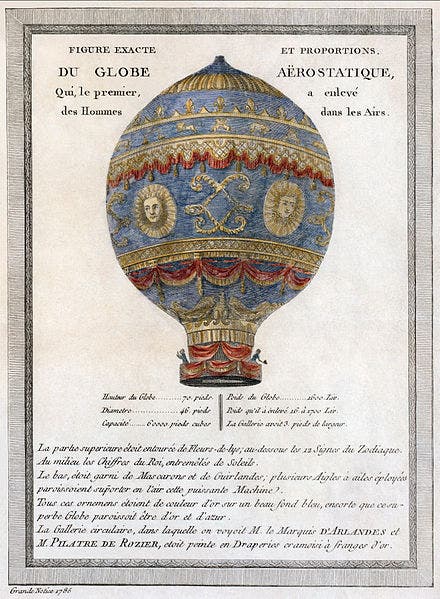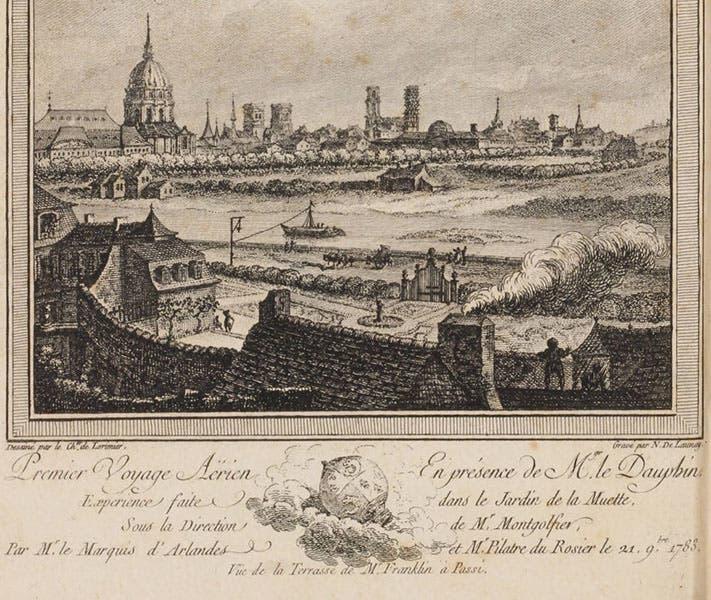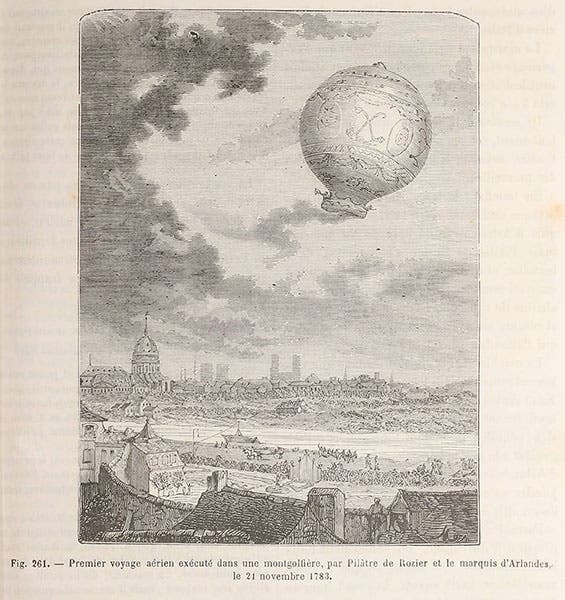Scientist of the Day - Francois Laurent d’Arlandes
Francois Laurent le Vieux d'Arlandes, a French marquis, was one of two lucky men chosen to ride in the basket of a Montgolfier balloon on its first manned ascent, Nov. 21, 1783. The balloon had been built by two brothers, Joseph and Etienne Montgolfier, with the help of a wallpaper manufacturer, which explains the appearance of the balloon. The Montgolfier brothers had sent up an unmanned flight in June, and an animaled flight in September (we assume "animaled" is a suitable analog to "manned", since the occupants of the September flight basket were a rooster, a sheep, and a duck). But now, for the first time, humans were to be sent half a mile into the air, with God knows what consequences.
The other occupant besides d’Arlandes was a chemist, Jean François Pilâtre de Rozier. Many accounts of this historic flight mention only Pilâtre de Rozier, as if he were in charge, but in fact he was a late addition to the flight plan – the original pilot was d'Arlandes, and he was the one who actually wrote up the official report of the voyage. “Pilot”, of course, is the wrong word here, since there was no piloting to be done; there was indeed nothing much to occupy the occupants except putting straw on the fire and quenching the cinders that touched off tiny glowing holes in the cotton and wallpaper skin.
The first take-off attempt had to be aborted, as it was windy, and while the balloon was still on tethers, it tipped sideways, and the rope tethers chafed on the paper skin and popped some of the seams and deflated the balloon. Fortunately, some women came out of the crowd with their needles and thread, and within a short while, the balloon was as good as new. There is something to be said for unsophisticated technology. The fire was restarted, the balloon was inflated once more, and at 12:54 P.M., she lifted off (we say “she” because, surprisingly, the balloon did not have a name. Within a few years, all hot-air balloons would have a name, the same name, montgolfier). The balloon ascended a thousand feet or so and moved along the river Seine, where none other than Benjamin Franklin, U.S. envoy to France, observed it from the terrace of his house, and an artist friend made a sketch that was later the basis for an engraving (first image). In a detail, you can see the view of the Seine from Franklin’s terrace, and the caption that identifies it. (fourth image).
The balloon almost came down prematurely several times, since d’Arlandes was new at this stoking-the-fire-with-straw business, and whenever he paused to put out sparks (he used a wet sponge impaled on one of the tines of his pitchfork to douse the fires), the balloon would descend and Pilâtre de Rozier would yell at him to feed the fire. You can see the two men in several of these images (third and fifth), and it looks like they can walk around, but in fact, each man is standing in a large basket affixed on opposite sides of the balloon and neither can move about. They couldn't even see each other, except for several peepholes cut into the skirt of the balloon.
Once the balloon crossed the river, and the glowing red spots in the balloon skin continued to proliferate, d’Arlandes decided enough was enough, and he let the brazier fire die, and they came down gently in a field between two windmills. Neither had suffered any ill effects from their brush with the stratosphere. They had reached an estimated altitude of 3000 feet and had travelled about 5.5 miles, and the entire flight took about half an hour. The aeronautical age had begun.
In his always useful history of experimental science, Les merveilles de la science (1867-91), Louis Figuier more or less copied the contemporary illustration by Faujas-de-St.-Fond (our first image), but he wisely enlarged the balloon so we could see it better, using details that he found in another contemporary engraving (our third image), to produce a hybrid version that provides the best of both versions (fifth image). And we still get the view from Franklin’s terrace.
Dr. William B. Ashworth, Jr., Consultant for the History of Science, Linda Hall Library and Associate Professor emeritus, Department of History, University of Missouri-Kansas City. Comments or corrections are welcome; please direct to ashworthw@umkc.edu.










